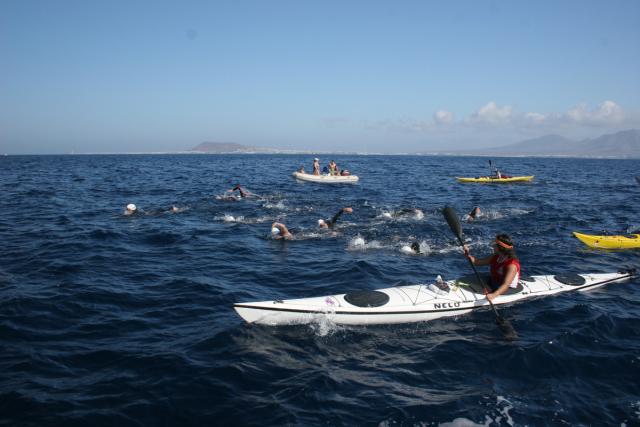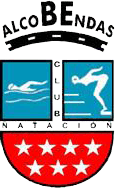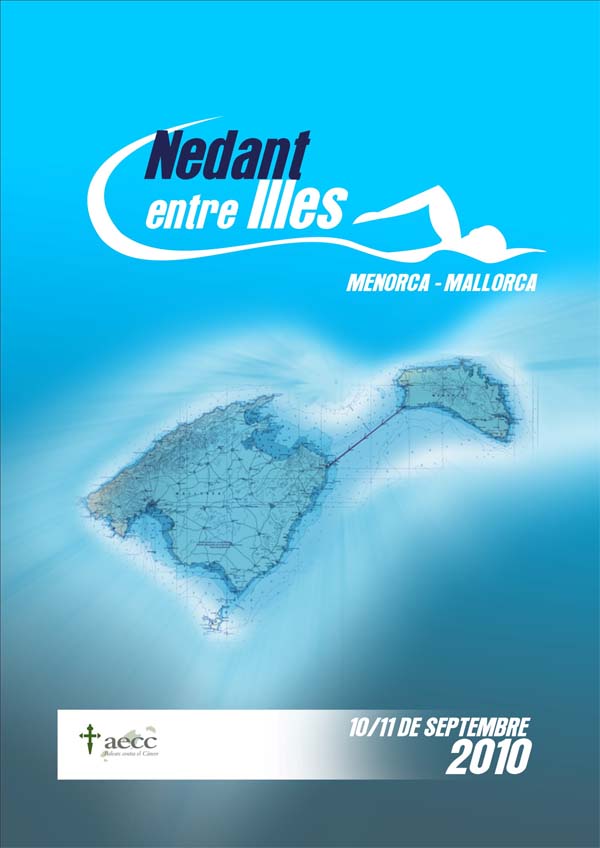The Bocaina 15 km offshore.
From the moment a swimmer makes the decision to go swimming in the 15km of the Bocaina, your thoughts go in a comprehensible way to know that swimming in a great openwater swim in the Atlantic Ocean.
The strong currents, big waves, turtles, sunfish, sharks and thousands of marine species coexist in this special narrow the Bocaina.
Fellowship and expressions of knowing that the trial open water swim make this trip a special bond among the participants. Swimmers go for a swim in groups according to their speed and experience so they would swim the crossing at great distance in sea safely.
The life and thought are inseparable, the voice goes to a third plane as all involved have ever encountered in the real Atlantic blue silence, concentration, and swimming.
The simple thoughts are inexpressible at times. But honest eyes turn and swimming becomes precise, elegant and harmonious relationship between the participants.
All they will swim the Bocaina, embark on a great adventure, and a special trip and demanding when it comes to where preparation and training are concerned. This preparation involves the virtue of patience, hoping to be well enough to swim with audacity ..
The reflections spring up in the excitement of those brave souls who enjoy the aquatic incarnation is necessary to swim in the 15km open water.
Interview with the organizers of the crossing:
Club Triatlón Vulcano sports coordinator and finisher of The Bocaina Oliver Acuna .
Javier Sanz swimmer/ finisher The Bocaina 2011 and current sports director of Club Natación Alcobendas.
 |
| · Jose Diaz · |
Jose Diaz · Can you tell us how did this magnificent journey? Who was the first swimmer who succeeded in this crossing? What is the true story of this journey?
Club Triatlón Vulcano · To our knowledge, it was an English swimmer named Edgar Ette, a resident on the island of Lanzarote and adventures sports lover, who one day decided to cross between the islands of Lanzarote, Fuerteventura alone, and as well did the circumnavigation of the island of Lanzarote in stages. To this, different from the feat of Edgar Ette, one day there was a conversation between members of the Club Triatlón Vulcano who wanted to do something that would appeal to the media and as public institutions see to the need of a public 50 meters swimmingpool, where the lovers of swimming, triathlon, elderly go for medical advice. Well it was worth and remains so to this day 12 years later. They built a pool with a glass of 25mtrs, and knew that demand would exist. They even went to talk shows, where talked about what was happening, crowded pool of users, people on the waiting list months ...
Jose Diaz · What is the percentage of swimmers who succesfully finished this demanding test?
Club Triatlón Vulcano · The percentage is high, for all those involved in crossing the Bocaina, come well prepared physically. To this, 92% participation achieves the other side, if the weather permits.
Jose Diaz · What are the main tips that a swimmer must follow to succeed in this majestic journey?
Club Triatlón Vulcano ·Well, from our point of view with the experience of participating in it and also organized it. You must have a good volume of meters made prior to participation, by level of swimmer and athlete type (for pure swimmers participating, and triathletes combining more activities). Ideally, a training plan from 5 months if you start from the off-season and between 3 to 4 months if you are normally doing triathlons, and a occaisional summer openwater. The ideal preparation for those who can combine swimming with sea would be as follows. A easy training preparation, but always to start with a pre-season training, 5 to 6 km in the pool with technique, strength of arms with blades or rubbers. Another training in the sea (this training will become the longest starting from 4 to 5 km, which gradually over the weeks will increase the meters (1km each week more), and combining different sea circumstances: calm, with waves, against the current. Third training section back to the pool, going from 5 to 6km or an early-morning double training with a 3km training and an afternoon with about 2.5km. Here we do specific (quality) training we would do short work combined series + Resistance Force, and other longer series, resistance, and variety not always giving combined monotony sets. A fourth section 4 to 5km could be combined with a foot race or output 1h bike. (this last would be more fun for triathletes combining sports and forgeting some of the strokes)
Jose Diaz · How to start dating is advisable to register to avoid running out of space?
Club Triatlón Vulcano · Today registrations for the Bocaina Crossing opens the second Monday in May. (May 14, 2012) Places are limited, the degree of difficulty and safety test involves organizing many meters away and offshore.
Jose Diaz · How have you experienced the growth of the discipline of open water from the beginning to the present days? Is there a big difference in enrollment since you started until now?
Club Triatlón Vulcano · There has been very strong growth in participation in this type of event, as a result, we have created other long-distance swims on Spanish territory. The Travesia Bocaina in the beginning, involved only 20 to 30 swimmers, and each year has increasing interest, getting more and more swimmers, reaching as in the last edition 2011 to 130 participants.
Nadandolibre · Current Swimming Club director of Club Natación Alcobendas, active open water swimmer and "ex" triathlete, can you tell us about your story and your passion for sports and how you came to swimming in open water?
Javier Sanz · I think it was in 92 when I started in triathlon and the following year when I ran my first championship of Spain, we were a few, we knew each other. Almost like openwater swimming now, but this year I have noticed a significant increase in participants. These were the years that started clubs like the CTOA.
At the end of November 2006, after 24 races in that year in the Canal de Isabel between duathlons and triathlons I broke my fibula and after a year and two operations later left the high-level competition.
Only swimming and cycling at Club Natación Alcobendas until a friend convinced me to swim in Valencia at theTravesía de Oliva (it has a fantastic triathlon) that weekend swam 3 crossings, Oliva morning, afternoon Guadalest and on Sunday in Las Palmeras . I entered fully into the club of "enfermos" (addicts). Meet and swim with the whole group of Valencians including Selina Moreno or Elena Borja was the best thing that could happen to me swimming without quavers.
Nadandolibre · How did you experience this crossing? Can you describe in a little story how you experienced it?
Javier Sanz · The personal experience even though they say this year has been the hardest in recent years has been extraordinary. I swam very comfortable from the start in a group that was not going fast so it wasn't physically demanding and I could enjoy the ride and look around me like at a sea training. I know there were people who had a hard time, others withdrew because of dizziness and vomiting but I enjoyed it and save the last 2000m of the currents was smiling all the way.
Nadandolibre · think that this journey can be very hard and complicated for inexperienced swimmers?
Javier Sanz · I think it is not the pool, or even the distance, the sea has its rules and will decide. I think no one should do a whole marathon before doing a half.
Nadandolibre · On a scale of 0 to 10 in difficulty to situate this journey?
Javier Sanz · It is difficult as easy a question Jose! If I go in the fastest group certainly say 9 or 10. Is necessary to know yourself and swim according to your time hardness is when the sacrifice-satisfaction equation block us.
Nadandolibre · Why did you decide to do this great openwater swim?
Javier Sanz · As good for triathlon is the IM Lanzarote, the Bocaina is the openwater swim in Spain. When you take some time doing hiking and listening, speaking with "addicts" who have swum . .. the swim! Something of 80% of those who have swum this year 2011 are repeaters. This passage is the reference.
Nadandolibre · To what extent at this wonderful impressive swim in deep blue have you seen Aquatic animals at the crossing?
Javier Sanz · It's amazing, what more! When it's cloudy visibility in the water is very high and swim with more people and support vessels gives you great confidence. The whet water allowed me to see a beautiful turtle, apparently the most elusive of the local fauna. The kayaker told me it was my lucky day.
In most coastal areas soles and stripes are frequently seen, but it was now not the case.
Nadandolibre · Best of the voyage and the worst?
Javier Sanz · The best without a doubt, the support and encouragement of my friends, especially my family who supported me all the time.
The worst thing to say to Tiago, canoeing guide, to stay with Naomi and the other swimmer who was with us. In the area was a lot of current and I wasbarely moving, I decided to swim at my top to exit that area, I could not wait for anyone, I swam without moving for 10 min, that were the last 1500m. Later I heard that some swimmers were removed from the area to be dropped a few meters ahead.
Nadandolibre · What volume of meters, training and open water tests you need to swim and enjoy throughout the test?
Javier Sanz · The record is important in any sport to see results, contrary to what might perish did not swim too, 3 days a week between 3,500 and 4,500 m. Now, if it is true that many weekends swimming in sea continuous sessions of an hour or two. The last month did not come down from 15000 m to the week and train at sea for almost three hours.
Among the trips that I've swum this year I can enumerate, Cullera 10km, 5km Denia, Benidorm Island, Javea 5km and I remember after finishing point I returned to the swimming another 5km ... Many early mornings!
Nadandolibre · How many openwater swims you've swum and is this the longest and most complicated?
Javier Sanz · The longer without doubt the most uncomfortable complicated by the local fauna was the 10km Cullera.
Nadandolibre · What advice would you give to those who mainly want to enjoy this majestic cruise Bocaina?
Javier Sanz · The advice I give is that you tested all. Goggles, wetsuits, breakfast, gels or biodramina if dizzy. Do not improvise anything the day of the test. Details like wearing glasses too tight can result in severe pain, a neoprene too small may not appreciate swimming in an hour but more than two may end up with an overload on the shoulder not to mention the dreaded chafing at the neck. I would tell them to swim long courses at sea and in groups. The yellow cap is the better than it looks and if you carry a bolla even better.
See you in the sea!
Jose Diaz ·Special thanks to:
El Club Triatlón Vulcano Oliver Acuña sports director de la Travesía La Bocaina Deportista y Finisher La Bocaina.
And to Javier Sanz sports director del Club natación Alcobendas and Finisher La Bocaina 2011.






























